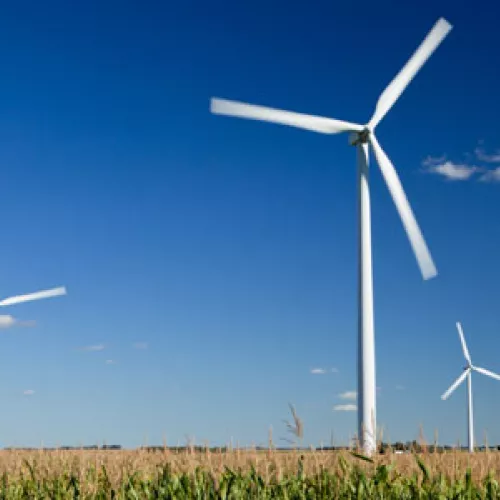CERTs Co-Director Joel Haskard spoke with Xcel Energy’s Senior Product Portfolio Manager Steve Mudd to get an update on Xcel Energy’s Windsource program.
Joel Haskard: Tell me a little about the Windsource program and how it is doing in Minnesota to date.
Steve Mudd: Windsource is Xcel Energy’s leading voluntary green power program, enabling our customers to purchase renewable energy that’s generated in excess of the company’s other state mandates. We currently have 20 wind farms that are dedicated or semi-dedicated to supply the energy that our customers purchase. Over 33,000 Minnesota homes and 264 businesses purchased 170,185 MWh of renewable energy from Windsource in 2013.
In 2013, Windsource had two significant milestones:
- We celebrated our 1 Billionth kilowatt-hour of sales in Minnesota. The feat was illustrated by a cool infographic that demonstrated what 1 Billion kWh really means.
- In 2013, the number of Windsource participants in Minnesota increased by nearly 11,000 customers (or about 33%)—the largest single year increase in the program’s history. This was really the result of three things: improved marketing tactics, environmental awareness, and the low cost of Windsource. In fact, NREL recognized Minnesota as having one of the ten least expensive green power programs nationwide.
Joel Haskard: I subscribe to Windsource and see the charge on my monthly bill; I also see an amount reduced from my bill since I am a Windsource subscriber…Can you explain how that works?
Steve Mudd: The Windsource rate structure has two components. The Windsource rate is 3.53 cents per kilowatt-hour and that number is based primarily on Xcel Energy’s cost to purchase wind energy from our dedicated Windsource wind farms. These are long-term contracts with the farm developers so the cost won’t vary significantly over time. Windsource customers are then exempted from paying the Fuel Cost Charge (FCC). The FCC includes a host of costs related to generating electricity. It includes the cost of coal and natural gas for our power plants as well as the costs of purchasing electricity on the market when demand exceeds what our own fleet can generate. The FCC changes monthly and can be impacted significantly by the cost of natural gas and the overall price for electricity in the market. In 2013, the FCC for residential customers ranged from 2.72 cents per kWh to 3.36 per kWh, with an average of 3 cents.
To come up with the net Windsource premium—the amount that Windsource customers pay compared to non-Windsource customers—you subtract the wind rate from the FCC. So on average in 2013, Windsource customers paid 0.53 cents per kWh more than non-Windsource customers. Our average residential customer uses about 675 kWh per month, so to be 100% powered by renewable energy, it costs about $3.59 per month. In March of this year, fuel costs spiked to 3.48 cents/kWh, so our customers will pay about 0.05/kWh—or about 33 cents total to be 100% green. If fuel costs continue to rise, it’s possible that Windsource customers could see a net credit on their bill. This is a tremendous game-changer and an indication of how Xcel Energy has been able to drive down the cost-curve for renewable energy.
Joel Haskard: There seem to be more and more electric vehicles on the road here in Minnesota and I understand that Xcel Energy has helped couple the Windsource program with electric charging stations… Can you say more about that program?
Steve Mudd: Our Windsource customers are obviously savvy about environmental issues. They tend to be early adopters when it comes to environmental practices like recycling and you’re very likely to find their home lit up with LEDs or CFLs. So it was no surprise to us to find that a very high number of EV owners were also Windsource customers. In our first comparison of EV and Windsource data, 35% of EV owners were Windsource customers.
To recognize and encourage this emissions-free driving, we adapted our Windsource messaging to talk about EVs and began offering things like a “Drive with GUST-o!” bumper sticker for new sign-ups. Xcel Energy has been involved with a number of different initiatives to support alternative-fuel vehicles and has been a huge participant in Drive Electric Minnesota—a consortium of public and private entities dedicated to encouraging the use of EVs. Through that effort, the Minnesota Pollution Control Agency spearheaded the “Zero Emissions Charging Challenge” which is an effort to get public charging stations powered with renewable energy. Xcel Energy jumped on board and we’re hoping to see every station in Minnesota powered by a wind turbine or a solar panel.
Joel Haskard: Finally any last thoughts to share with folks about Windsource?
Steve Mudd: As a marketer, my final thought is always a call to action. To get more information and to sign up for Windsource, visit Xcel Energy’s Windsource Guide.


